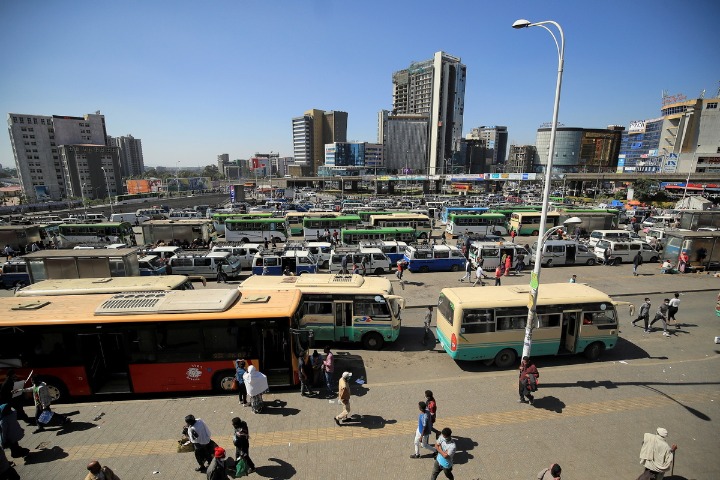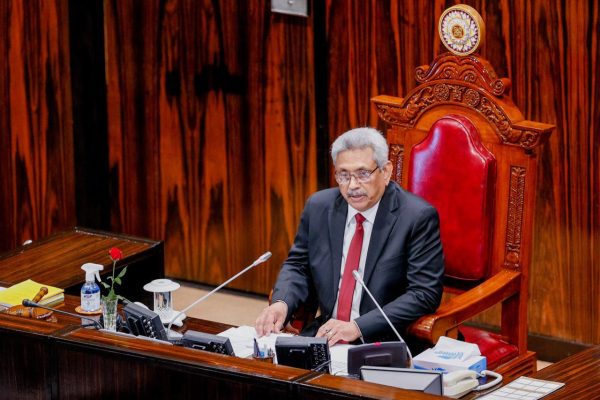Latin America and the Caribbean is facing a serious debt crisis

1. All DCs – General Guidance
Figure 1: Comparison between amounts lent and repaid per year (total long-term external debt – in billions of US dollars)
Graph 2: Comparison of the evolution of the total outstanding debt
Outstanding debt
The total amount of debt
with net transfers (total long-term external debt – in billions of US dollars)
Echoing Table 1 from our first part, Chart 1 compares the amounts borrowed (in orange) and the amounts repaid (in blue – also called debt service) on total long-term external debt by year. Chart 2 shows the evolution of the stock of debt (in orange – right scale) and net transfers (in blue – left scale).
As mentioned earlier, from 2000 to 2006, debt service exceeded amounts borrowed while outstanding debt increased only moderately. Net transfer was generally negative. During the following period, from 2008 to 2019, the net transfer became positive. We notice an exception in 2015 when commodity prices fell. In general, debt outstanding and debt service have increased dramatically.
2. Latin America and the Caribbean Region
Population of Latin America and the Caribbean in 2019: 646 million, including the population of developing countries: 613 million.
List of 25 DCs: [1]
- 1 low-income country: Haiti
- 24 middle-income countries: Argentina, Belize, Bolivia, Brazil, Colombia, Costa Rica, (Cuba), Dem. Dominican Republic, Dominica, Ecuador, Grenada, Guatemala, Guyana, Honduras, Jamaica, Mexico, Nicaragua, Paraguay, Peru, Saint Lucia, Saint Vincent and Grenadines, Salvador, (Suriname), Venezuela
List of high-income countries (excluding developing countries): Antigua-&-Barbuda, Aruba, Bahamas, Barbados, British Virgin Islands, Cayman Islands, Chile, Curaçao, Panama, Puerto Rico, Saint-Kitts-&-Nevis, Saint-Martin (French), Saint-Martin (Dutch), Trinidad and Tobago, Turks and Caicos Islands, Uruguay, US Virgin Islands.
Note that the BM
world Bank
BM
The World Bank was founded within the framework of the new international monetary system set up in Bretton Woods in 1944. Its capital is made up of contributions from member states and loans on the international money markets. It has funded public and private projects in Third World and Eastern European countries.
It is made up of several closely associated institutions, including:
1. The International Bank for Reconstruction and Development (IBRD, 189 members in 2017), which grants loans in productive sectors such as agriculture or energy;
2. The International Development Association (IDA, 159 members in 1997), which grants long-term loans (35-40 years) to the least developed countries at very low interest rates (1%);
3. The International Finance Corporation (IFC), which provides both loan and equity financing to business enterprises in developing countries.
As Third World debt worsens, the World Bank (along with the IMF) tends to adopt a macroeconomic perspective. For example, it applies adjustment policies intended to balance the payments of heavily indebted countries. The World Bank advises countries that must undergo IMF therapy on issues such as reducing budget deficits, rounding up savings, bringing foreign investors within their borders or freedom of prices and exchange rates.
the classification can be questioned. However, we decided to use it to facilitate the use of World Bank data. For a critical approach to the categories used by international institutions, see: “South/North/Developing countries/Developed countries – What are they? https://www.cadtm.org/South-North-Developing-Countries-Developed-Countries-What-is-it-all-about
Chart 3: Evolution of public external debt in the Latin America and Caribbean region by creditor (in billions of US$)
In the graph above, we can see the two periods mentioned earlier, a reduction in debts from 2004 to 2006 with an increase in income accompanied by an increase in commodity prices, followed by a constant increase in debt to from 2007. We can also distinguish four categories of creditors:
- in blue: bilateral creditors (loans between States),
- in yellow: multilateral creditors excluding IMF
IMF
International Monetary Fund
Together with the World Bank, the IMF was founded on the day the Bretton Woods agreements were signed. Its first mission was to support the new standard exchange rate system.When the Bretton Woods system of fixed rates ended in 1971, the main function of the IMF became that of being both policeman and fireman of world capital: it acts as policeman when it applies its structural adjustment policies and as a firefighter when he intervenes. to help governments at risk of not repaying their debt.
As with the World Bank, a weighted voting system works: according to the amount paid as contribution by each member state. 85% of the votes are needed to modify the IMF Charter (meaning that the USA with 17.68% of the votes has a de facto right of veto on any change).
The institution is dominated by five countries: the United States (16.74%), Japan (6.23%), Germany (5.81%), France (4.29%) and the Kingdom United (4.29%) .
The other 183 member countries are divided into country-led groups. The most important (6.57% of the vote) is led by Belgium. The smallest group of countries (1.55% of the vote) is led by Gabon and includes African countries.http://imf.org
(loans from international financial institutions such as the World Bank and development banks), - in red: IMF loans, [2]
- in green: private creditors; (dark green, borrowings from financial markets such as sovereign bonds mostly sold on Wall Street; khaki, bank borrowings; light green, borrowings from other types of private creditors).
Graph 4: Comparison between the evolution of the total stock of debt and net transfers on the public external debt of Latin America and the Caribbean (in billions of US dollars)
Recall that the net transfer refers to the difference between what a country receives in the form of loans and what it pays out (including capital and interest, also called debt service). If the amount is negative, the country has paid more than it has received.
In the graph, the columns in orange refer to the net transfer.
| Public external debt of developing countries in 2000: 406 billion dollars Public external debt of developing countries in 2019: 984 billion dollars PED of the region at high risk of debt distress in February 2021 [3] : Dominica, Haiti, Saint-Vincent & Grenadines. |
From 2000 to 2019, the region’s public external debt has multiplied by 2.43. During the same period, the net transfer was positive (+33.53 billion dollars). From 2000 to 2008 the net transfer was negative: -188.62 billion dollars or 4.5% of developing countries in the region GDP
GDP
Gross domestic product
Gross domestic product is an aggregate measure of total production in a given territory equal to the sum of gross values added. The measurement is notoriously incomplete; for example, it does not take into account any activity that is not part of a commercial exchange. GDP takes into account both the production of goods and the production of services. Economic growth is defined as the change in GDP from one period to another.
in 2008. The financial crises in the North and the flow of capital to the countries of the South largely explain the positive net transfer in the following years.
It is emblematic of the economic difficulties that these countries have had to face that while their GDP doubled from 2000 to 2008 (from 2,085 to 4,203 billion dollars), it only increased by 20% from 2008 to 2019 (5 $149 billion).
It is also significant that the 22 developing countries of the region, with the exception of Guatemala and Venezuela, and of course Cuba, have called on the IMF during these twenty years; they borrowed $135 billion from the IMF and repaid $105 billion, 12% of which was interest only.
Among the countries hardest hit by IMF loans and austerity policies are Argentina, Ecuador, Haiti and Suriname.
The evolution of the public external debt of developing countries by category of creditors in the region corresponds to the general picture of developing countries, i.e. a to share
To share
A unit of ownership in a company or financial asset, representing a portion of the total share capital. Its owner (a shareholder) has the right to receive an equal distribution of all distributed profits (a dividend) and to attend shareholder meetings.
bilateral and multilateral loans, and a sharp increase in the share due to the different types of private creditors, in particular sovereign bonds sold on the financial markets, most often Wall Street, from 2008. With the exception of Haiti , low-income countries, other countries can borrow on financial markets.
Although the region is not the region in the world that is most dependent on commodity exports, 17 countries are still highly exposed to price fluctuations which affect their export revenues. This applies to the export of agricultural products (Argentina, Belize, Brazil, Ecuador, Guatemala, Paraguay, Uruguay), fossil fuels (Bolivia, Colombia, Ecuador, Mexico, Saint Lucia, Trinidad and Tobago, Venezuela ) and minerals (Chile, Guyana, Jamaica, Suriname). [4]
From March 1, 2020 to January 1, 2021, currencies in the region also depreciated sharply against the US dollar and the euro, the two main foreign exchange currencies. The currencies of only four countries (Bolivia, Chile, Colombia, Honduras) appreciated against the dollar, within a range of +0.37% to +14.88%. Conversely, the currencies of a large majority of countries depreciated, within a range ranging from -1.97% (Nicaragua) to -92.90% (Venezuela). The three economic engines of the region, Argentina, Mexico and Brazil, lost 26.05 points, 0.94 points and 13.65 points respectively. [5] With the exception of Chile (+2.77%), the currencies of all the countries in the zone depreciated against the euro.
Graph 5: Debt service of developing countries in the Latin America and Caribbean region (in billions of US dollars)
In twenty years, debt service needs in the region have literally exploded, from 72.86 billion dollars to 143.74 billion). In 2019, 43% of these developing countries devoted more resources to debt service than to health expenditure (Argentina, Belize, Dominica, Ecuador, Grenada, Haiti, Jamaica, El Salvador, Saint-Vincent & Grenadines). Debt servicing for these 10 countries represented between 6.7% and 38% of State revenue. [6]
Conclusion
Public debt has risen sharply in Latin America and the Caribbean. The global economic crisis makes reimbursement more difficult. While the continent is deeply affected by the coronavirus pandemic with more than 235,000 dead in Brazil, more than 170,000 in Mexico, more than 56,000 in Colombia, more than 50,000 in Argentina, more than 41,000 in Peru, [7] suspending debt repayment is more justified than ever. It is actually a sine qua non condition to redirect public spending and mitigate the consequences of the pandemic, the impact of the economic crisis and the climate crisis.
The series continues with analyzes of the evolution of indebtedness in other regions of the Global South.
Translated by Snake Arbusto, Vicki Briault, Mike Krolikowski and Christine Pagnoulle (CADTM)









![[Press release] Debt crisis: a failed G20 summit](https://www.cadtm.org/local/cache-vignettes/L710xH373/f0bd231bf33e0619051e008da75a42-274d7.jpg)
